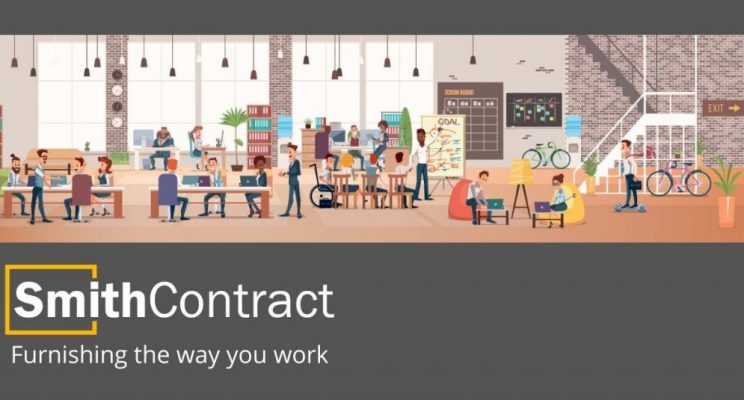We all want to maximize our efforts to provide a safe & healthy environment for our employees as we develop our Return-To-Work strategy. Smith Contract has connected with industry leaders to provide the tools to help us do just that.
Return-to-Work Planning:
Phase 1: Creating a safe environment for employees return to the office.
Planning Timeframe: NOW (materials lead times are 3-6 weeks)
- Review and develop flex-work schedules
- Plan for division of spaces and placement of divider screens
- Establish safety and cleaning policies
- Document and share policies and procedures with staff prior to returning to the office

Phase 2: Measuring the office to adjust and maintain a healthy and supportive environment.
Planning Timeframe: 2 months following Return-To-Office.
Key elements to measure and track:
- Review volume of remote and flex work staff to best determine number of seats needed
- Increased virtual meetings may raise the ambient noise level and require sound masking or absorptive materials to be added
- Review typical meetings (number of people and type)
- May require increased number of 1–2-person meeting spaces
- Increased need for personal spaces such as pods/booths
- May require reconfiguration of open office areas
- The Goal is to live in the space, measure and monitor the needs, then react to apply targeted changes and best practices.

Planning A Flexible Office:
The new workplace will need to be reimagined with dedicated workspaces becoming less common as more organizations increase their ratio of shared office space to staff. Open workspace space-standards may increase, or we will see smaller clusters of contiguous workstations as we reduce office density. Flexibility found in the ability to easily modify office configurations will increase ability to meet new demands as organizations strive to become more agile. Touchless door hardware, printers/copiers, and elevator controls will become commonplace in response to reduce exposure to germs.
- Create “Neighborhoods” to minimize large open spaces
- Co-locate open and closed collaboration spaces within workstations
- Central spaces can be planned for future staff growth while adding to collaboration spaces early in life cycle
- Create a balance of individual and team open and closed spaces
- Freestanding units can be placed within workstation footprint allowing for integration within floor plan and future growth opportunities
- Collaboration units can be configured for 1-to-8 people
- Allows for co-location within workstations/office for proximity of use
- Collaboration units can be relocated within office space
- Integrates acoustic materials and added privacy into open spaces
- Ability to integrate Media and AV technology
















